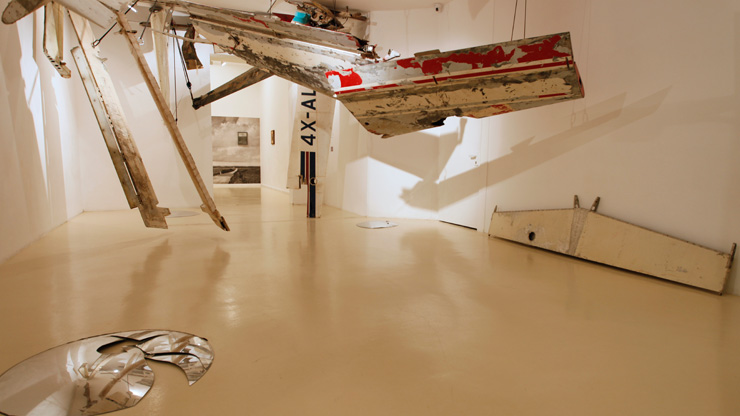
The work explores a state of consciousness which comprises a sharp conflict between a longing for or expectation of transcendence, love, or spiritual uplifting and a possible outcome involving failure, disappointment, or disillusionment. The stronger the sense of ascension is, the greater the danger of collapse. As the artist points out, attempts at taking off entail giving in to danger yet breed the movement and the courage to act. The work challenges the viewers to take active part in an experience which removes them from their “safety zone.” They are required to move across a seemingly dangerous space, with airplane debris hanging over their heads, which seem about to fall down. In consequence, on arrival at the other side of the space, they may feel a sense of relief and satisfaction for having lived up to the challenge. The crossing of this “dangerous” space leaves room for a myriad of interpretive projections associated with a variety of aspects of life – be they affective, artistic, or professional – all related to the idea that the road to success or happiness often involves risk-taking and experiencing the biggest fear of all: the fear of crashing and failing.
The rawness of the materials and the battered look of the wreckage do not detract from the installation’s calculated, precise aesthetics. While Kandel’s style is unique, it also shows the influence of various international artists, such as Peter Buggenhout, who uses found debris in his works and in 2009 exhibited a work recalling a battered airplane at the Herzliya Museum of Contemporary Art (The Blind Leading the Blind, 2008). Kandel’s work is also influenced by Eva Hesse and Mona Hatoum. Like them, she works with found materials and reassembles them in new manners which evoke both emotional and intellectual responses.
Ella Kandel, born 1985 in Jerusalem; Lives and works in Tel Aviv.
Less Reading...
